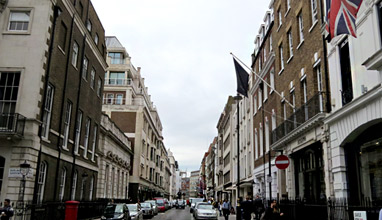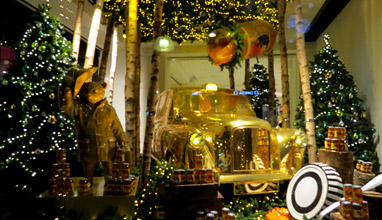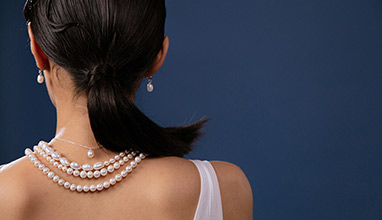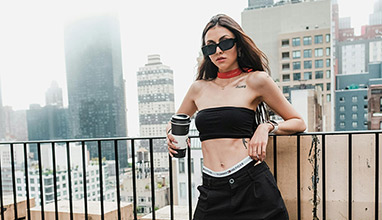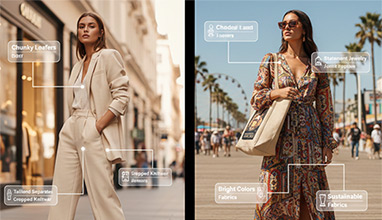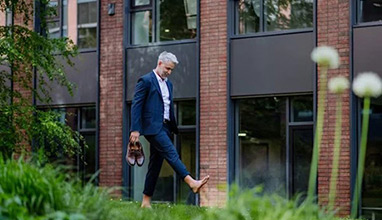The Ultimate Guide to London’s Fashion Hotspots
As one of the major fashion capitals of the world, alongside New York, Paris and Milan, London has long held an esteemed reputation for setting trends on the global style stage. From the flagship stores of heritage brands like Burberry and Aquascutum to underground collectives that craft avant-garde looks in repurposed warehouses, the city is overflowing with inspiration. You could get lost wandering between iconic department stores, hidden vintage shops, indie boutiques, and bustling markets across central postcodes as well as the edgy East End.
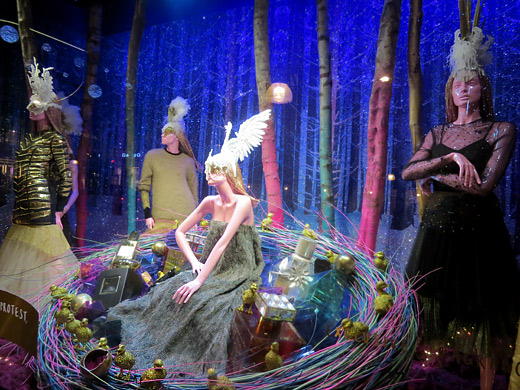
A shopping window on Oxford Street, London, photo by BGFN
Soho – Vintage Boutiques and Designer Steals
With its vibrant history of counterculture and jazz clubs, today Soho attracts creatives and musicians alongside fashionistas seeking everything from mainstream labels to unusual vintage pieces. Many iconic British brands crop up around Carnaby Street, which shot to fame in the Swinging Sixties. Nearby Liberty, with its iconic mock-Tudor façade, is a must for luxury prints and fabrics and has been since 1875. Berwick Street Market offers an array of vintage bargains within the clusters of independent shops, while the streets south of Oxford Street, like Marshall Street, hide trendsetting boutiques. Contemporary flagships and classic tailors also neighbour Carnaby Street’s pedestrianised strips.
Duck down a charming side alley like Kingly Court for lesser-known designers too. Refuel over lunch in Soho at one of the many cafes and bakeries, soaking up the atmosphere on iconic Old Compton Street. From patisseries like Maison Bertaux to cosy hideouts on Bateman Street, refuelling options span slick Aussie-inspired brunch spots to old-school caffs for a spot of people watching. Dean Street Townhouse and The Groucho Club offer exclusive cocktails for those interested in such things.
Covent Garden – Central Lifestyle Hub Encapsulating British Style
Something of an open-air shopping centre sprawled between historic cobbled lanes and piazzas, Covent Garden captures a quintessentially British sense of style. Seven Dials offers a meeting point of narrow roads lined with boutiques, while the imposing neoclassical facade of the former flower market is now home to mainstream stores. The central market hall itself overflows with stalls selling handmade jewellery, fragrances and fashion alongside performers that keep the crowds entertained.
Nearby Neal Street and quirky Monmouth Street provide homegrown alternatives to household names like Dr Martens, with classic Barbour jackets brushing shoulders with kitsch one-off creations. James Street and its surrounds host more premium brands between cafes and restaurants perfect for an afternoon pit stop. From quaint tea rooms to artisan coffee stops, taking a break to recharge the batteries is all part of the Covent Garden experience.
Knightsbridge – Pinnacle of High-End Fashion Anchored by Harrods
Synonymous with elite fashion and old money, Knightsbridge delivers the full luxury shopping experience that rivals anything from Paris’ Champs-Élysées or Fifth Avenue in New York. At the heart lies the world-famous Harrods, with its prestigious heritage spanning almost two hundred years. Customers flock here to peruse British and international premium fashion, accessories, homeware, and more within its labyrinthine halls. Nearby Sloane Street also attracts pedigree designer boutiques like Prada, Gucci, and Jimmy Choo, all displaying their flagship collections.
The smaller Victorian thoroughfares of Pont Street and Cadogan Place to the east play host to independent upmarket boutiques to complete the opulent atmosphere. For celebrity spotting and indulgent refreshments, hotels like The Berkeley and Mandarin Oriental offer exclusive bars with skyline views. Heading north-west towards Kensington, we can find discounts at outlet stores and second-hand shops beyond Hyde Park’s manicured lawns.
Camden – Alternative Culture with Vintage Market Bargains
Contrasting sharply with Knightsbridge’s privilege, Camden Town embodies retro grunge. With its graffitied walls and punk roots, the area first gained fame hosting musicians like The Clash and Amy Winehouse. Today the sprawling Camden Market alongside Regent’s Canal still delivers plenty of character, attracting tourists to pick through rock memorabilia, biker boots, tattoo parlours, and gothic styling.
Hundreds of stalls line the locked passageways, plying lace, leather, embroidered tops, vintage dresses, and activist-themed tees. Shops like General Eyewear add mod sunglasses to complete indie looks. Food stalls waft global bites, from sizzling paella to pad Thai wok dishes, while entertainment ranges from aerial acrobats to drumming buskers vying for crowds’ attention. North past Chalk Farm Road lie alternative stores like Rock ‘n’ Roll Rescue selling hidden vinyl and quirky jewellery along quiet Primrose Hill.
Spitalfields – Creative Gentrification Blending Retro Kitsch with New Designers
A vibrant area echoing waves of immigration now gleaming from rapid regeneration, Spitalfields represents creative gentrification at its finest. Indie boutiques rub shoulders with new designers, organic cafes, and reclaimed furniture stores across these atmospheric Victorian lanes, many of which are paved with cobblestones. Boundary-pushing looks vie for attention amid the vintage styling and retro kitsch of this tight-knit community.
Sunday Upmarket around the stately Christ Church showcases cutting edge craft alongside curated antiques. Heading deeper into the creativity of Shoreditch, explore independent shops specialising in niche looks around Old Street’s tech hub and Redchurch Street’s galleries. Pop-ups and local collectives also pepper nearby streets like Rivington and Chance Street with avant-garde appeal. Look for the iconic towering crane to find trendy Boxpark’s 60+ stores too.
Dalston & Stoke Newington – Free-Spirited Bohemian Edge
Out east, Dalston Lane’s creative hub nurtures new designers within developing areas like Hackney, Bow, and Whitechapel in conjunction with the Centre for Fashion Enterprise. Energetic markets, vinyl shops, late-night venues and global restaurants intersect with boutique Turkish tailors, drawing free-spirited crowds. Stoke Newington’s Church Street offers vintage heaven alongside organic cafes and indie boutiques.
Broadway Market in Hackney buzzes on Saturdays with young talent selling crafts, knits, and artwork to crowds soaking up the bohemian vibes over street food. Chatsworth Road offers independent dress agencies and antiques running into Clapton’s urban cool. Expect a wonderfully experimental, global-inspired edge.
From Burberry to the newest names evolving amid East London’s warehouses, London remains an essential stop on the global fashion map for trailblazing looks decades after the Swinging Sixties. Iconic department stores, designer steals, vintage markets, and independent boutiques sit side-by-side across central areas as gentrification pushes creative redevelopment beyond tourist hotspots. Through the decades, various urban villages have cultivated their own niche trends from punk grunge to boho cool and new designers dream of launching their pioneering aesthetics across studios old and new. So set aside the practical trainers, don a pair of comfiest leather boots, and get ready to pound those iconic pavements in search of inspiration.
Hits: 5912 | Leave a comment
Tags:London, . shopping, Oxford Street, Soho, Carnaby Street



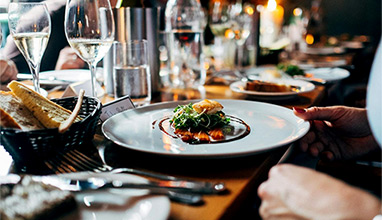
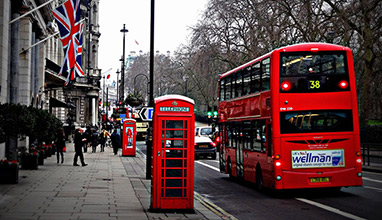

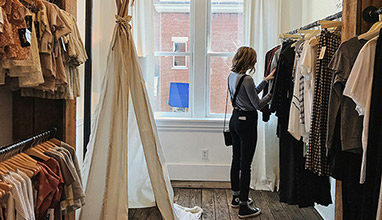
-m.png)

